Sensor Sweep: Conan, James Bond, Creep Show 2, Poul Anderson
Monday , 16, October 2023 Sensor Sweep 1 CommentConan (Sprague de Camp Fan): This one starts with Conan raiding a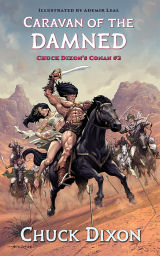 caravan. A bloody business for sure and Dixon doesn’t shy away from describing the slaughter. Everyone, except for a young male soldier, is unmercifully slaughtered. After the killing is done one of Conan’s men, Zekir al Khoraj, is upset that their raid did not result in capturing any women to rape and suggests this last captive will suffice.
caravan. A bloody business for sure and Dixon doesn’t shy away from describing the slaughter. Everyone, except for a young male soldier, is unmercifully slaughtered. After the killing is done one of Conan’s men, Zekir al Khoraj, is upset that their raid did not result in capturing any women to rape and suggests this last captive will suffice.
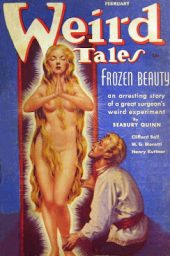 Weird Tales (M Porcius): Today we wrangle some stories from the February 1938 issue, including works by the premier Weird Tales writer, New England’s Howard Phillips Lovecraft, and one of our favorite scribblers, Henry Kuttner, the young man from California. And in the spirit of exploration which I like to think characterizes this journey, we’ll read two stories by individuals we’ve never read before, one by Clifford Ball and one by M. G. Moretti.
Weird Tales (M Porcius): Today we wrangle some stories from the February 1938 issue, including works by the premier Weird Tales writer, New England’s Howard Phillips Lovecraft, and one of our favorite scribblers, Henry Kuttner, the young man from California. And in the spirit of exploration which I like to think characterizes this journey, we’ll read two stories by individuals we’ve never read before, one by Clifford Ball and one by M. G. Moretti.
Games (Walker’s Retreat): What would RIFTS look like if it were a competent product? Remaking this product into a complete, comprehensive, and competent fantastic adventure game means doing the following: Designing, testing, and perfecting a complete tabletop wargame whose rules and procedures scale up seamlessly from Man To Man to Massive Fleet Battles & Cosmic Entity Combat- all going on simultaneously (i.e. the scales interact).
Fantasy (John C. Wright): Phantastes: A Faerie Romance for Men and Women is an otherworldly novel by Scottish minister George MacDonald, first published in London in 1858. Forgotten by critics, despite that it is the first fantasy novel properly so called of the modern era, it is recalled and reread these days largely, if not exclusively, by fans of C.S. Lewis, for whom the little book was the prime inspiration and polestar of his own immortal imaginative work.
Science Fiction (Jon del Arroz): A pro sci fi writer’s top 5 favorite Baen Books.
Weird Tales (Tellers of Weird Tales): Francis Stevens, aka Gertrude M. Barrows Bennett (1883-1948), wrote the first serial by a woman to appear in Weird Tales magazine. (I’m pretty sure that Laurie McClintock was not a woman but a man.) All of those early serials were two-parters and so was hers. It is entitled “Sunfire,” and it was in the issues of July/August and September 1923. “Sunfire” was the cover story for the July/August issue, making it the first cover story by a woman writer in “The Unique Magazine.”
Science Fiction (With Both Hands): Federation is a collection of five of H. Beam Piper’s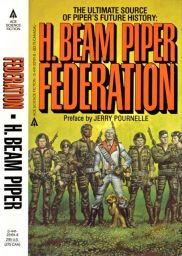 short stories, curated and re-published by John F. Carr in an Ace Paperback edition in 1981. The book leads off with a preface by Jerry Pournelle, who knew Piper through science fiction fandom before Piper’s suicide. Carr has an illuminating introduction, giving a short history of Piper’s life and work.
short stories, curated and re-published by John F. Carr in an Ace Paperback edition in 1981. The book leads off with a preface by Jerry Pournelle, who knew Piper through science fiction fandom before Piper’s suicide. Carr has an illuminating introduction, giving a short history of Piper’s life and work.
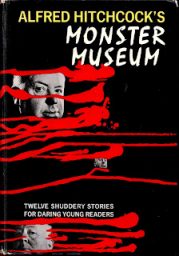 Horror (Por Por Books): I’ve been reading horror stories since 1970, when I was 9 years old and I saw a copy of Alfred Hitchcock’s Monster Museum (Random House, 1965) on the shelf of my grammar school library. While most of the stories in the book were rather tame – it was aimed at an audience of juvenile Baby Boomers, after all – Joseph Payne Brennan’s story ‘Slime’ immediately gripped my attention, and from then on, my interest in the genre began, and has lasted since.
Horror (Por Por Books): I’ve been reading horror stories since 1970, when I was 9 years old and I saw a copy of Alfred Hitchcock’s Monster Museum (Random House, 1965) on the shelf of my grammar school library. While most of the stories in the book were rather tame – it was aimed at an audience of juvenile Baby Boomers, after all – Joseph Payne Brennan’s story ‘Slime’ immediately gripped my attention, and from then on, my interest in the genre began, and has lasted since.
Firearms (Frontier Partisans): The use of a .22 in a sniper role at limited range, especially in urban environments makes a lot of sense. It’s comparatively quiet even unsuppressed, making it difficult for an enemy to determine where fire is coming from. Suppressed, it’s pretty close to silent; only the sonic crack of the bullet is heard. If your target is higher than the ankles, a .22 can be plenty lethal. Ask any emergency room doc.
in urban environments makes a lot of sense. It’s comparatively quiet even unsuppressed, making it difficult for an enemy to determine where fire is coming from. Suppressed, it’s pretty close to silent; only the sonic crack of the bullet is heard. If your target is higher than the ankles, a .22 can be plenty lethal. Ask any emergency room doc.
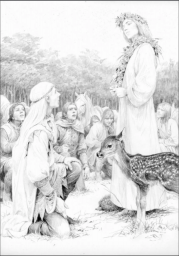 Fantasy (Frontier Partisans): I have always been intrigued by The Witcher, Andrzej Sapkowski’s tales of professional monster hunter Geralt of Rivia, set in a quasi-medieval Slavic Fennario. I love The Witcher 3: Wild Hunt video game soundtrack. I sampled the Netflix series, and found it dire, as do those who love the books. Having way too much reading to do, I never delved in to the original stories.
Fantasy (Frontier Partisans): I have always been intrigued by The Witcher, Andrzej Sapkowski’s tales of professional monster hunter Geralt of Rivia, set in a quasi-medieval Slavic Fennario. I love The Witcher 3: Wild Hunt video game soundtrack. I sampled the Netflix series, and found it dire, as do those who love the books. Having way too much reading to do, I never delved in to the original stories.
History (The Past): Compared to the number of surviving hillforts – there are almost as many on Toby Driver’s distribution map as there are settlements in modern Wales – only a tiny handful have been excavated. As a result, there is much that we do not know about the later prehistory of Wales, or, as Toby puts it, there are ‘many dark corners that require illumination, or the spark of imagination’ if we are to piece together the lives of our Iron Age ancestors.
many on Toby Driver’s distribution map as there are settlements in modern Wales – only a tiny handful have been excavated. As a result, there is much that we do not know about the later prehistory of Wales, or, as Toby puts it, there are ‘many dark corners that require illumination, or the spark of imagination’ if we are to piece together the lives of our Iron Age ancestors.
D&D (DM David): In 1994, when file sharing on the internet typically meant logging into a FTP server hosted by a university for uploads and downloads, gamers used the new technology to exchange their own D&D creations like monsters, classes, and spells. TSR management felt that even fan creations for D&D belonged to the owners of the game.
James Bond (The Book Bond): This week sees the release in the UK of the new biography, Ian Fleming: The Complete Man by Nicholas Shakespeare. Ian Fleming’s greatest creation, James Bond, has had an enormous and ongoing impact on our culture. What Bond represents about ideas of masculinity, the British national psyche and global politics has shifted over time, as has the interpretation of the life of his author.
biography, Ian Fleming: The Complete Man by Nicholas Shakespeare. Ian Fleming’s greatest creation, James Bond, has had an enormous and ongoing impact on our culture. What Bond represents about ideas of masculinity, the British national psyche and global politics has shifted over time, as has the interpretation of the life of his author.
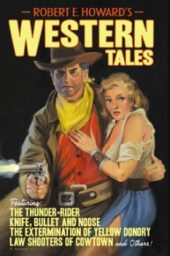 Robert E. Howard (Black Gate): What we do know, however, is that Howard wrote several Western stories in which the trail towns which served as destination points for those great herds of Longhorns play an important part, beginning with “Gunman’s Debt”, which went unpublished during Howard’s lifetime but is one of his best Westerns. It’s set in the small Kansas settlement of San Juan, and although Howard tells us that the rails and the trail herds haven’t reached it yet, it’s clear that they’re on the way. San Juan is new and raw and more than a little squalid.
Robert E. Howard (Black Gate): What we do know, however, is that Howard wrote several Western stories in which the trail towns which served as destination points for those great herds of Longhorns play an important part, beginning with “Gunman’s Debt”, which went unpublished during Howard’s lifetime but is one of his best Westerns. It’s set in the small Kansas settlement of San Juan, and although Howard tells us that the rails and the trail herds haven’t reached it yet, it’s clear that they’re on the way. San Juan is new and raw and more than a little squalid.
Science Fiction (Dark Worlds Quarterly): The idea of vortex as a place of danger dates back to mythology. Jason and the other Argonauts had to worry about water vortexes like the dual danger of Scylla and Charybdis. Edgar Allan Poe used the marine danger in “Descent Into the Maelstrom” (Graham’s Lady’s and Gentleman’s Magazine, May 1841). In more recent times, our knowledge of weather has us watching for the Polar Vortex that brings very cold temperatures to where I live.
Weird Tales (Black Gate): Lin Carter was one of the finest genre editors of the 20th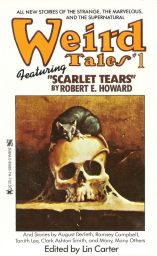 Century, and Weird Tales magazine was the most important fantasy magazine of the last century, publishing the career-defining work of Robert E. Howard, H.P. Lovecraft, Clark Ashton Smith, and hundreds of other writers. In December 1980 Zebra Books published the equivalent of a genre superhero Team-Up, the first two volumes of a paperback relaunch of Weird Tales helmed by Lin Carter.
Century, and Weird Tales magazine was the most important fantasy magazine of the last century, publishing the career-defining work of Robert E. Howard, H.P. Lovecraft, Clark Ashton Smith, and hundreds of other writers. In December 1980 Zebra Books published the equivalent of a genre superhero Team-Up, the first two volumes of a paperback relaunch of Weird Tales helmed by Lin Carter.
Conan (Rough Edges): CARAVAN OF THE DAMNED is the second Conan novel by veteran author Chuck Dixon, based solely on the stories by Robert E. Howard that appeared in the pulp WEIRD TALES. I’m not going to get into the convoluted legal and copyright issues surrounding the character. Those are for somebody else to figure it out. My interest is in whether or not this is a good Conan yarn, and the answer (with a minor reservation or two) is a resounding yes.
Actors (Wertzone): News has sadly broken that veteran Scottish actor David McCallum has passed away at the age of 90. McCallum was well-known for his roles in series such as The Man from UNCLE, Sapphire & Steel, and the NCIS franchise.
McCallum has passed away at the age of 90. McCallum was well-known for his roles in series such as The Man from UNCLE, Sapphire & Steel, and the NCIS franchise.
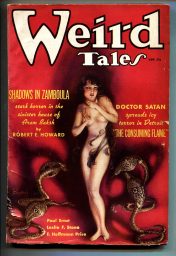 Robert E. Howard (Karavansara): Beyond the Black River appears in the May 1935 issue of Weird Tales, that shares with The Flower-Women, by C.A. Smith and a reprint of Lovecraft’s Arthur Jermyn. It is, with little doubt, one of the better stories by Howard – clearly inspired by the tales by Fenimore Cooper, it is mature, tense, desperate in its conclusion. In barely features Conan, who acts an accessory; the focus of the action is Balthus, a young man caught in the advancing tide of Pictish invaders, sweeping the newly settled lands beyond the Black River.
Robert E. Howard (Karavansara): Beyond the Black River appears in the May 1935 issue of Weird Tales, that shares with The Flower-Women, by C.A. Smith and a reprint of Lovecraft’s Arthur Jermyn. It is, with little doubt, one of the better stories by Howard – clearly inspired by the tales by Fenimore Cooper, it is mature, tense, desperate in its conclusion. In barely features Conan, who acts an accessory; the focus of the action is Balthus, a young man caught in the advancing tide of Pictish invaders, sweeping the newly settled lands beyond the Black River.
Tolkien (Notion Club Papers): Some people have badly misunderstood The Shire as some kind of an ‘anarchy’; with the implication that a lack of much in the way of formal government mistakenly-equated with a condition of unconstrained individual ‘freedom’.
Poul Anderson (Poul Anderson Contributor Articles): I asked Poul Anderson in one of my letters to him whether he had been raised as a Lutheran (because of his Scandinavian ancestry suggesting that to me). He replied that whatever religious background he had was Episcopalian. However, Anderson called himself an agnostic. Despite his doubt about the existence of God, Anderson always treated honest believers with respect in his works. In addition several of his books and stories were very Catholic.
Tolkien (Apostolic Majesty): The Life of J.R.R. Tolkien.
Conventions (Mystery File): Except for the year 2020, there has been a summertime pulp convention since 1972. First, it was Pulpcon, running through 2008. Next came PulpFest, beginning in 2009 and running straight through this year (except for that year lost to COVID). PulpFest 2023 got underway early on Wednesday evening, August 2, when the convention’s chairperson, Jack Cullers, opened the dealers’ room at the DoubleTree by Hilton Pittsburgh.
summertime pulp convention since 1972. First, it was Pulpcon, running through 2008. Next came PulpFest, beginning in 2009 and running straight through this year (except for that year lost to COVID). PulpFest 2023 got underway early on Wednesday evening, August 2, when the convention’s chairperson, Jack Cullers, opened the dealers’ room at the DoubleTree by Hilton Pittsburgh.
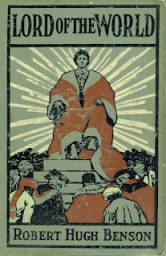 Fiction (R Horton): Robert Hugh Benson was born in 1871, the son of E. W. Benson, who became Archbishop of Canterbury. Robert Hugh Benson’s older brothers and his sister were all writers, the best known of them being E. F. Benson, author of the Mapp and Lucia novels. The younger man also became a writer, of 15 novels, most historical, several quite popular.
Fiction (R Horton): Robert Hugh Benson was born in 1871, the son of E. W. Benson, who became Archbishop of Canterbury. Robert Hugh Benson’s older brothers and his sister were all writers, the best known of them being E. F. Benson, author of the Mapp and Lucia novels. The younger man also became a writer, of 15 novels, most historical, several quite popular.
Art (DMR Books): The witching season is upon us,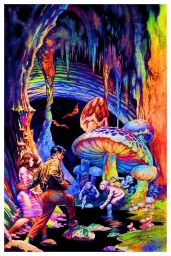 the time when “spooky + cool” things come to the fore. In that spirit, nothing says ‘cool’ and ‘spooky’ like Frazetta black light posters. I didn’t even know such existed until I checked out a post on Cap’n’s Comics and found out one image was, indeed, from a black light poster.
the time when “spooky + cool” things come to the fore. In that spirit, nothing says ‘cool’ and ‘spooky’ like Frazetta black light posters. I didn’t even know such existed until I checked out a post on Cap’n’s Comics and found out one image was, indeed, from a black light poster.
Cold Steel (Scholagladiatoria): The Fairbairn Sykes commando dagger, or fighting knife, is an iconic weapon designed for use by British and Empire commandos in WW2. But as with many national icons that arose from WW2, there are several widely believed myths that exist about them. Here is cover a few of them.
Sherlock Holmes (The Pulp Super-Fan): While I don’t try to get every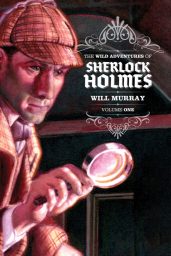 possible new Sherlock Holmes novel or story collection, I will probably check out one from an author I am familiar with. Pulp historian and author Will Murray has been doing new stories with Doc Savage, The Spider, Tarzan, and other pulp characters. I was a little surprised to see a collection of new Sherlock Holmes stories from him under his “Wild Adventures” line.
possible new Sherlock Holmes novel or story collection, I will probably check out one from an author I am familiar with. Pulp historian and author Will Murray has been doing new stories with Doc Savage, The Spider, Tarzan, and other pulp characters. I was a little surprised to see a collection of new Sherlock Holmes stories from him under his “Wild Adventures” line.
Cinema (Kairos): Creepshow 2, the sequel to the beloved 1982 original, certainly has its macabre storytelling moments. While it doesn’t quite reach the same heights as its predecessor, it manages to deliver a decent dose of chills that should satisfy fans of anthology-style horror.
Cinema (DMR Books): I will be reviewing Dagon, a movie that was directed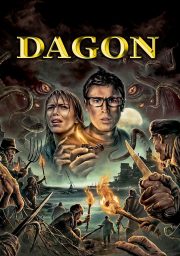 by Stuart Gordon and inspired by the works of H. P. Lovecraft. During the conclusion section of this article, I will also try to recommend other movies to watch and other writings to read, for those who might be looking for something somewhat similar to Gordon’s Dagon.
by Stuart Gordon and inspired by the works of H. P. Lovecraft. During the conclusion section of this article, I will also try to recommend other movies to watch and other writings to read, for those who might be looking for something somewhat similar to Gordon’s Dagon.
Fiction (J P Fukudai): After the showy towing of a prize (a British whaler that’s been recaptured from the Americans during the ongoing War of 1812) into the West Indies squadron and the exciting chase after an American privateer, the eleventh novel in Patrick O’Brian’s Aubrey and Maturin series of Age Napoleon British navy books, The Reverse of the Medal (1986), occurs completely ashore, back in England. The story mostly develops the spy side of O’Brian’s series, with a treasonous “rat” making trouble for British intelligence, Stephen Maturin, and Post-Captain Jack Aubrey.
Westerns (Gold Medal Book Blog): The transcontinental railroad is under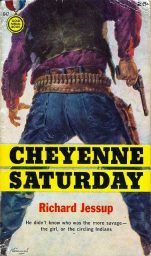 construction and Union Pacific’s motley crew of workers have reached the Nebraska prairie. They are tasked with knitting together the nation using iron rails for thread and locomotives as needles. Liam Kelly, a big Irishman who would have been played by Victor McLaglen if this story had a film version, is the go-to mid-level boss who oversees the surveyors, graders, and rail layers.
construction and Union Pacific’s motley crew of workers have reached the Nebraska prairie. They are tasked with knitting together the nation using iron rails for thread and locomotives as needles. Liam Kelly, a big Irishman who would have been played by Victor McLaglen if this story had a film version, is the go-to mid-level boss who oversees the surveyors, graders, and rail layers.
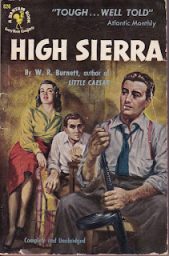 Fiction (Vintage Pop Fictions): High Sierra is a 1940 novel by W.R. Burnett (1899-1982), one of the great hardboiled American crime writers. Roy Earle is thirty-seven and he’s just out of prison. And he’s already involved in another planned job, a hotel heist. Roy had been a big shot. He’d been one of Dillinger’s gang. Six years behind bars hasn’t done him much good. He’s still tough and dangerous, but now he’s fatalistic and obsessed with death. He’s tired.
Fiction (Vintage Pop Fictions): High Sierra is a 1940 novel by W.R. Burnett (1899-1982), one of the great hardboiled American crime writers. Roy Earle is thirty-seven and he’s just out of prison. And he’s already involved in another planned job, a hotel heist. Roy had been a big shot. He’d been one of Dillinger’s gang. Six years behind bars hasn’t done him much good. He’s still tough and dangerous, but now he’s fatalistic and obsessed with death. He’s tired.
Just got my copy of Caravan of the Damned, already read the first chapter and enjoying it. Ademir Leal’s illustrations also help enjoy the story.